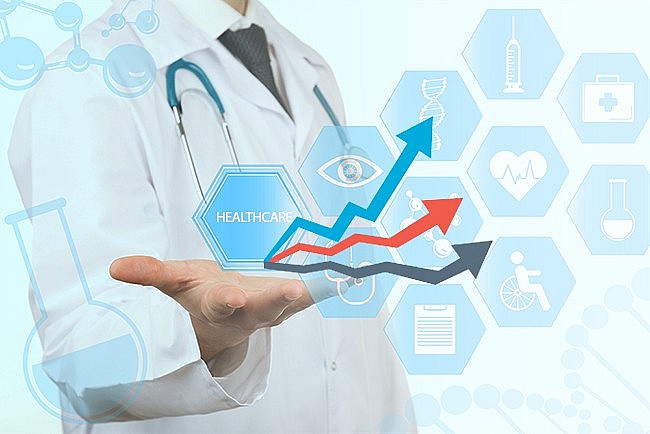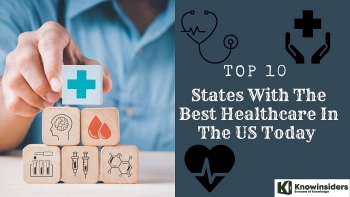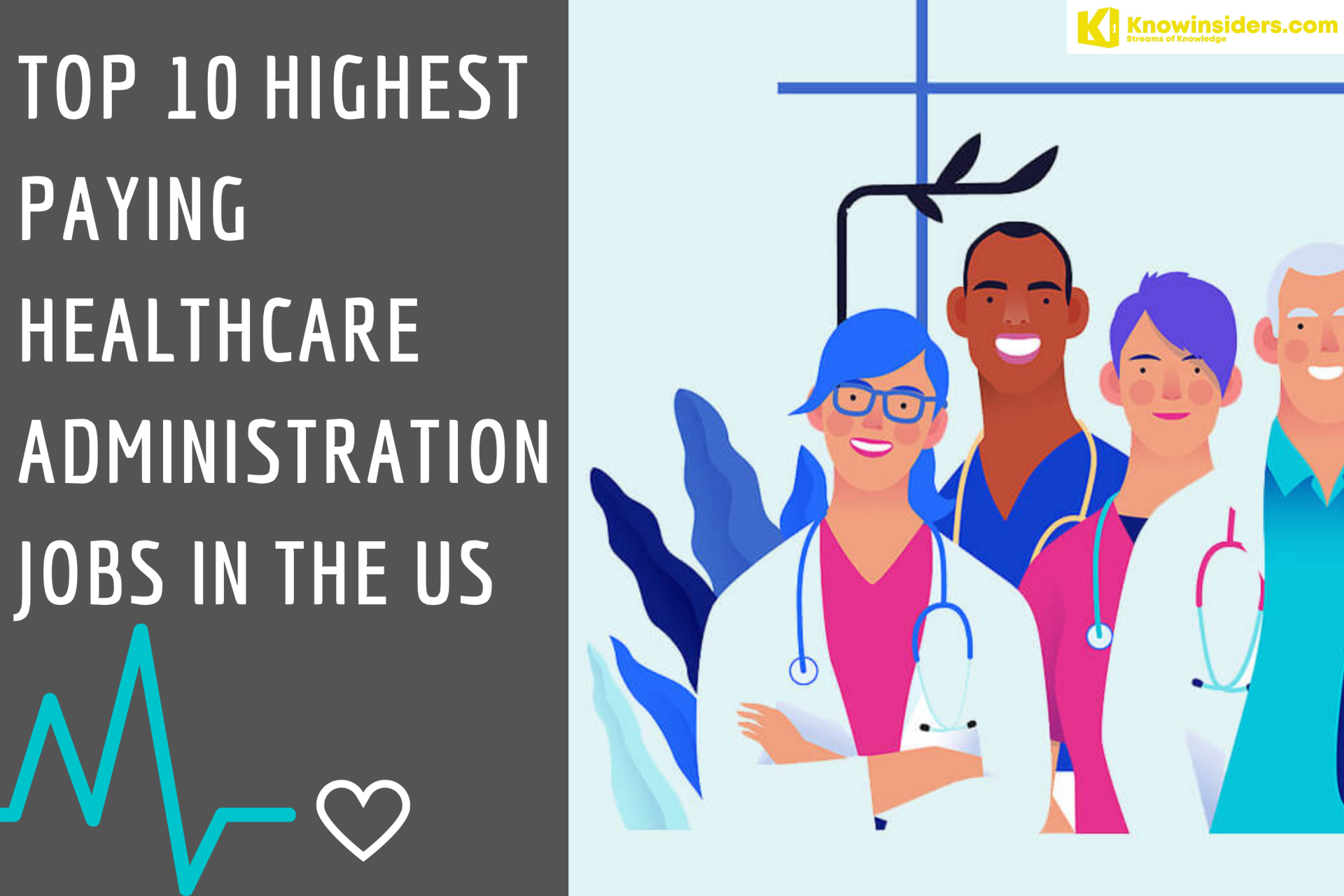Top 10 Hottest Healthcare Trends To Rule The World In 2024
 Top 15 Hottest Fashion Trends To Dominate In 2024 Top 15 Hottest Fashion Trends To Dominate In 2024 |
 Top 10 Emerging IT Trends That Will Rule The World 2024 Top 10 Emerging IT Trends That Will Rule The World 2024 |
| Table of Contents |
There will be significant changes in the way doctors interact with, diagnose, and treat patients as a result of people living longer and the development of new technologies.
Artificial intelligence and digital tools will significantly advance medication development, patient care, and healthcare business models in the coming period. In this article, you will find the hottest trends predicted to rule the global healthcare in 2024.
 |
| Top 10 Hottest Healthcare Trends To Rule The World In 2024 |
Top 10 Hottest Healthcare Trends To Rule The World In 2024
1. As health care expenses rise, businesses are becoming more vigilant
In 2024, there is little indication that the skyrocketing prices of health care in the United States will slow down, and despite investments in technology, clinical innovation, and attempts to control utilization and waste, worries about the expense of prescription drugs and medical services will only intensify.
Due to a number of factors, including general inflation, labor pressures on health care systems, growing concern over provider shortages, burgeoning mental health needs, missed and postponed preventive screenings leading to an increase in late-stage cancer diagnoses, and worsening chronic conditions, employers are facing a forecasted higher than historical cost trend. As a result, employers are also feeling more urgency about pricing.
Costly gene and cell therapies, as well as the anticipated increased demand and broad usage of GLP-1s for the treatment of diabetes and obesity, are going to be major financial factors for self-funded businesses in the future as they work to provide their members with high-quality, value-added healthcare.
2. Workflow automation and optimization enabled by AI
Healthcare companies are changing their workforce strategies to attract and retain talent as a result of the ongoing personnel shortages. This allows them to provide greater flexibility to healthcare workers who want to achieve a better work-life balance. In an effort to reduce the workload for medical personnel, they are also increasingly using automation and artificial intelligence (AI) to speed up standard procedures and measurements.
AI integration into CT systems, for instance, can automate radiographers' most time-consuming tasks in diagnostic imaging, freeing them up to spend more time with patients. To provide radiologists with the excellent image quality they require for an accurate diagnosis, AI-based reconstruction is then employed. Through automated measurements and comprehensive 3D quantification and modeling of the heart, AI can help simplify cardiac ultrasonography. This enables physicians to deliver better and more effective cardiac care while also assisting sonographers in obtaining and interpreting images correctly.
The emergence of generative AI in the healthcare industry will provide automation with additional impetus in the coming years. According to a recent Bain & Company poll, the largest immediate benefits of generative AI, according to healthcare executives, are in lowering staff administrative workloads and improving operational efficiencies [1]. Among the most potential uses are automated documentation and patient visit summary, which free up doctors' time for other, more important work.
3. Services for mental health remain a top priority
The Business Group on Health reports that 70% of businesses want to provide access to mental healthcare a higher priority in 2024, demonstrating the continued strong need for mental health services. Notably, a Gallup poll conducted in 2015 revealed that the percentage of American adults suffering from depression is at an all-time high, rising from 19.6% in 2015 to 29% in 2023. It also indicates that a greater number of people are seeking medical attention and receiving diagnoses for mental health issues.
Employers, according to Kelsay, will keep spending money on digital solutions, but they'll demand more specialized services from the suppliers they select. She draws attention to three new areas of concern: treatment for substance use disorders, suicide prevention, and mental health services for children and adolescents.
4. Companies expect more from their healthcare collaborators
Employers are turning to their brokers, consultants, insurers, PBMs, and digital healthcare providers for solutions as healthcare benefits get more expensive. Although Kelsay believes businesses won't suddenly start terminating partnerships, she does believe they will reduce the range of services they offer by eliminating unnecessary or unused benefits. Stated differently, partners must demonstrate their ability to provide high-quality treatment and cost reductions.
"Employers are asking those partners to have proof points from the data outcomes that validate their programs are indeed delivering on their promise," Kelsay states. Employers are currently pausing to consider whether they really need all of these solutions.
READ MORE: Multiple Solutions for Health Workforce Shortage
5. Predictive analytics-based early risk identification and action
In recent years, one of the most exciting developments in healthcare technology has been predictive analytics. Predictive analytics can assist healthcare providers in increasing efficiencies and taking preventative action by extracting operational and clinical insights from both historical and real-time data. According to the Philips Future Health Index 2023 research, up from 30% in 2021, 39% of healthcare executives intend to invest in AI to forecast outcomes.
Predictive analytics is already assisting healthcare providers in managing and forecasting patient flow, which enables them to allocate personnel and resources where they are most needed. These capabilities are now a standard feature of data-driven hospital management, having shown themselves to be invaluable in crisis situations (like the COVID-19 pandemic). Predictive analytics can also assist in determining when specific hardware components may require repair or replacement through continuous monitoring of medical equipment, such as MR scanners. Because of this, 30% of service cases can be finished before equipment failure occurs, sparing healthcare operations from needless interruptions.
6. Intelligent technology that supports the creation and upkeep of healthy routines
Healthy physical routines were made popular more than 15 years ago by wearable, customizable technology in the form of smartwatches. The market is now filled with a wide range of increasingly advanced smart health devices, some of which can even monitor wearers' vital signs [1, 2]. This shows that people still want health technologies that are easy to use and can adapt to their changing needs and preferences.
By supporting individuals in adhering to dental hygiene practices and keeping a closer eye on children's growth and development, for instance, we anticipate that this trend in healthcare technology will continue to increase and encourage healthier behaviors in 2024. There is a change to a world in which individuals can anticipate and steer clear of possible health problems.
For instance, the importance of dental health to general health has been extensively studied [3]. Even though people wish to take greater responsibility for their own health, they still require assistance since they lack daily dedication to excellent dental hygiene and have gaps in their knowledge. Electric toothbrushes that connect to AI-powered apps can gather information about how users brush and provide tailored advice to help them stick to better brushing habits.
7. Senior Citizen Assistance
The aging populations of many wealthy countries will unavoidably place more strain on healthcare systems as individuals live longer and need more assistance as they age. The development of creative solutions that allow the elderly to live longer in their own homes as opposed to occupying space in nursing homes, hospitals, or hospices will be prominent. Additionally, there will be a greater emphasis on creating novel therapies for illnesses like Alzheimer's and Parkinson's that only affect the elderly and burden their healthcare systems. There will be significant ramifications for other topics covered here, such as virtual hospitals, healthcare assistants, and preventative care.
READ MORE: Top 20 Best Healthcare Administration Jobs For Recent Graduates With No Experience
8. Three-D Printing: From Tools to Organs
The field of additive manufacturing, which uses techniques like 3D printing to create things, has a significant influence on the medical field. It can be used to print tools and devices on demand, such as prosthesis, orthopedic or dental implants, and surgical instruments, in regions of the world where medical equipment is scarce. The feasibility of 3D-printed organs for transplant utilizing biological tissue extracted from the patient's body is also being researched. If successful, this could address the ongoing lack of organs available for transplant and significantly lower the expense of these operations.
9. Integration of Mental and Physical Health Services Provision
The treatment of mental and physical illnesses has generally been kept apart for the majority of medical history. This has changed as a result of the COVID-19 pandemic, as medical professionals now understand the importance of a holistic approach and the fundamental connections between mental and physical health. In 2024, frontline healthcare providers, such primary care physicians, would progressively screen patients for mental health concerns and consider how they may affect the course of treatment and recovery from physical ailments.
10. Since the pandemic, there is a greater staffing shortfall
In October 2023, there was a deficit of about 17,000 primary care physicians, 12,000 dentists, and 8,000 mental health professionals in the US healthcare system. If there aren't enough of these qualified specialists, the healthcare system may quickly become overburdened.
According to a Harris Poll and HealthDay poll, 35% of respondents had experienced the negative effects of a labor shortage in the sector. Even though 84% of American adults have attempted to obtain medical care, 73% have run into difficulties and delays.
Health professionals are also impacted by the shortages. Stress and burnout are major hazards when there is no fresh workforce to share the load and workloads are increasing. As more medical professionals leave the field because to burnout and rigid workplace norms, the problem will only get worse. These challenges have grown in significance since 2020, when the first COVID-19 lockdown occurred.
In summary
Healthcare professionals are encountering difficulties that restrict their capacity to treat patients when they use antiquated methods for document transmission and reception. The need to digitize healthcare documentation is indicated by broader industry trends such as an aging population, an increase in patient load, and staffing shortages. This will help to streamline the provider experience and enhance the patient trip.
 Top 10 States With The Best Healthcare in the US Today Top 10 States With The Best Healthcare in the US Today Depending on where they live, some Americans have better health care options than others. If you want to learn more about which states have the ... |
 10 Most Useful Healthcare Trends That Will Dominate in 2023 10 Most Useful Healthcare Trends That Will Dominate in 2023 Application of artificial intelligence, telehealth, wearable medical devices, etc are the most important and useful health trends that are forecast to dominate in the 12 ... |
 10 Highest-Paying Healthcare Administration Jobs In The US Today 10 Highest-Paying Healthcare Administration Jobs In The US Today You aren't sure which 10 healthcare administration jobs in the United States pay the highest salaries. Take a look at the following list, which features ... |
























